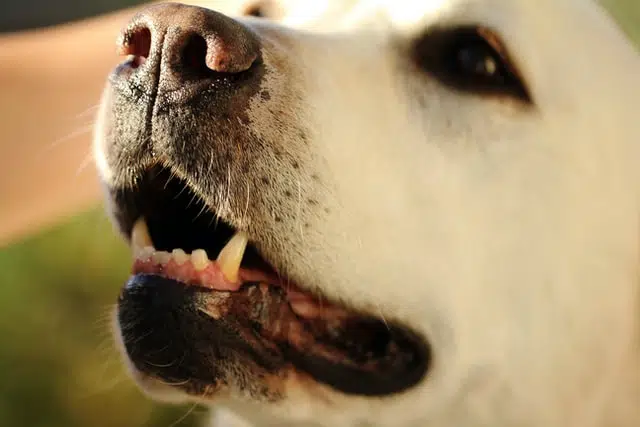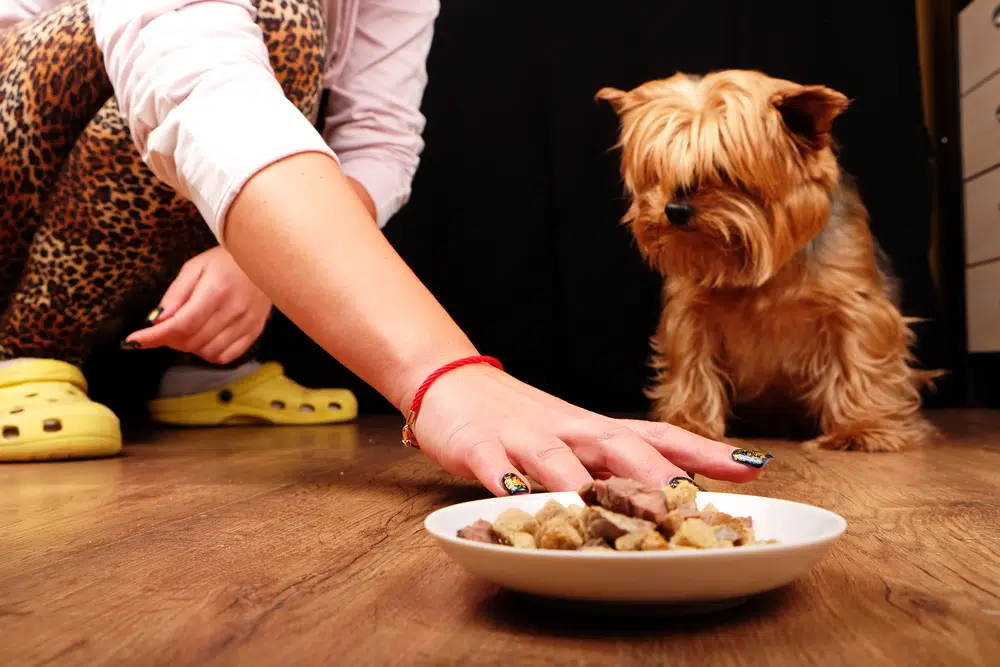Home » Blog » Pet » Pet Health & Safety » Wondering Why Your Dog Isn’t Eating?
Categories
Tags
animal welfare
breed profile
buying a car
buying a pet
Car
car accessories
car care
car features
car insurance
Car safety
car sales
car service
cat
cat behaviour
cat body language
Cat Breeds
cat food
cat insurance
comprehensive car insurance
Dog
Dog Behaviour
dog body language
Dog Breeds
dog food
Dog Insurance
dog training
eco friendly cars
Kitten
New Car
pet accessories
pet activities
Pet Adoption
pet breeders
pet days of the year
pet fun stuff
Pet Health
pet insurance
pet parenting
Pet Safety
pet services
Puppy
rescue pets
road safety
road trip
safe driving
Recent Blog:
Facebook Posts
1 day ago
Are intestinal worms setting up camp in your dog’s gut without paying rent? Here’s how to spot the main culprits and get rid of them too:![]()
![]() Preventing, Identifying and Treating Intestinal Worms in Dogs - bit.ly/43YjCKu
... See MoreSee Less
Preventing, Identifying and Treating Intestinal Worms in Dogs - bit.ly/43YjCKu
... See MoreSee Less
Preventing, Identifying and Treating Intestinal Worms in Dogs
www.pd.com.au
Intestinal worms, such as roundworms in dogs are one of the least glamorous topics on the planet. These intestinal parasites that basically use our dogs
PD Insurance
with Dogs West.
3 days ago
We enjoyed meeting #breeders #doglovers and members at the Dogs West Open Day. Special thanks to our partner Dogs West for organising an incredible event. There is still time to enter our pawsome competition. Click here for details: bit.ly/4covyce![]() #PDinsurance #dogswestopenday #dogswest
... See MoreSee Less
#PDinsurance #dogswestopenday #dogswest
... See MoreSee Less
3 days ago
Did you know? The Manx is a breed that is known for its lack of a tail, which is caused by a genetic mutation.
... See MoreSee Less
The only thing worse than your dog eating everything is your dog not eating at all. Because after all it’s a time-worn tradition and virtually a dog motto to eat as much as possible. Anywhere you look in dog history, our perky pups are faithfully by our side, ready to eat any scrap we leave on the table.
Whether you and your dog have spent years together or you’ve a new puppy, if your dog isn’t eating it can be downright distressing. For you, your dog and of course, the lingering feeling of concern may very well spread through the rest of the household.
But fear not, read this article to help you help your pooch find their appetite.
6 possible reasons your dog is not eating
There are several reasons for a dog to stop eating. Your plan of action is to determine the root cause so you can get onto a good treatment plan. Here’s how.
1. Check their mouth
Your dog might have a sore mouth that makes it difficult to eat. He or she won’t be able to tell you, but you can have a look to see whether their gums or pearly whites don’t look as they should. Or your pup may have a scrape or cut on the inside or outside of their mouth that they’re protecting.
For wounds you can consult your vet about using a topical treatment. If the cause is connected to oral hygiene, read the steps for dog teeth cleaning then head to the vet for a check up. Dental disease can cause allll kinds of issues so you don’t want doggo to go down that path.
And consider getting our Deluxe dog insurance plan for a wide range of doggy dental cover.

2. Assess whether they’re nauseous
Like people, pets tend to eat less when they’re sick and nauseous. Again, your pup may not be able to articulate these feelings in words, but you can look for the signs. Common signs include above-average drooling, lethargy, diarrhoea or vomiting.
Your dog might not be eating because they’ve already eaten something poisonous that’s making them nauseous. It’s not uncommon for dogs to taste test rotting seaweed, dead animals and poop, the way you or I might try a canapé at a dinner party. But, these can have dire consequences that land your puppy at the vet hospital and in need of antibiotics.
Summer comes with a host of things your pup may be prone to eating but shouldn’t. Read how to keep pets cool during summer to find out what these are. Also read why dogs eat grass because if your dog is doing this, they could be trying to clean out their stomach.
3. Be aware of foreign body ingestion
To continue from the previous point dog owners should be aware of puppies and pooches eating non-food items which could cause blockages. Nearly 10% of all claims we received from dog owners over the last year have been for accidental ingestion (which can cause choking).
Things that aren’t meant to be eaten can get lodged in your dog’s throat or stomach and sometimes require surgical intervention. In situations like these, things can get ugly very fast, which is why the best plan of action is to get pup to the vet asap.
Read about rawhide – a common dog chew – you might decide it’s not the safest option. Looking for alternatives, then read this guide to gifts for dogs and cats.
4. Find out if your dog has a medical condition
There are many medical conditions that result in reduced appetite. That’s not to say your dog is sick, but rather than you book in a visit to the vet to rule out the possibility.
From minor ailments to cancer and kidney disease, there are a host of illnesses that could prevent your dog from eating the way they need to. If your vet assesses a medical condition is the reason your dog isn’t eating, they can form a prognosis to get pooch munching again.
5. Evaluate if they’re anxious or uncomfortable
Your dog may not be eating if they’re anxious, stressed or uncomfortable. Animals have finely attuned senses and are very sensitive to changes. Whether that’s a new baby, housemate, or home renovations, your pet may feel nerve-wracked enough not to eat as usual.
Read how to introduce your dog to a new baby and if you’re building or renovating, read construction works for pet safety tips. If you’ve recently gone back to work as a result of changing pandemic schedules, your dog might be missing you. Read about separation anxiety in pets so you can help them back to their happy place.
Or, your dog may not be eating because they’re too hot, cold or generally uncomfortable. Read how to keep pets safe in summer and which dog winter jackets suit the cold (plus how to tell if they’re cold).
6. Is it just a fussy eater phase?
If your dog is not eating the food you give them, you could also try out a new food. It’s not uncommon for dogs and cats to train us in the ways of which foods suit them best. If your dog food storage isn’t working the food may also just be stale (would could cause it to be bad).
This happily means nothing is wrong, but rather that your dog has a taste preference. A nutritional need like added vitamins, minerals or nutrients may be the underlying cause. And while you want to fulfill this need, once you do find the food they like be sure not to overfeed them out of joy and relief.
Read National Pet Obesity Day to find out why you don’t want to tip the scales the other way around either!

4 steps to take when your dog isn’t eating
If your dog isn’t eating try out the following steps to give them a softer landing and hopefully help recover their appetite:
- Be patient. If your dog isn’t eating they might just need some time. Make sure they’re dehydrated as this is important for the first two days of not eating. On rare occasions a dog may just not be hungry and decide to skip a meal, which is OK. Try leaving their meal out to give them the chance to graze.
- Warm your dog’s food up. Like people, pets’ smell and taste tends to be hampered when they’re sick. Heating up your pup’s food brings out the flavours and smells and can entice them to eat.
- Give them a treat. If pup hasn’t been feeling well, try offering them a special treat that they’ve always loved. If your dog turns their nose up at this, this may be an indication of just how bad they feel.
- Visit your vet. Failing your pup perking up on their own, you should take them to a vet. If you suspect something serious is at play don’t wait, rather get them professional help right away.
Remember your dog can’t tell you what’s wrong, but they depend on you to make the right choices at the right times. And by taking note of little changes and observing how your dog feels, you can speak dog!
Dog insurance for a softer landing
Don’t put yourself in the position of having to choose between your pocket and your pet when it comes to healthcare. Pet insurance costs very little each month and when you need it most, it can make the biggest difference to your savings and your pet’s wellbeing.
Have a look at our dog insurance plans and know that depending on your dog’s age you can get one or more months free with us. Time flies when you’re having fun, so get a quote today before your puppy is all grown up.
Share On:




